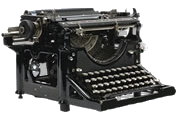Odd Post-War Thinking from H.L. Mencken (The Smart Set, 1920)
Perhaps in his haste to be the reliable cynic, H.L. Mencken (1880 – 1956) decided to ignore the haphazard nature of industrial warfare and indulged in some Darwinian thinking. There is no doubt that this column must have infuriated the Gold Star Mothers of W.W. I, who were still very much a presence at the time this opinion piece appeared, and it can also be assumed that the veterans of The American Legion were also shocked to read Mencken’s words declaring that:
The American Army came home substantially as it went abroad. Some of the weaklings were left behind, true enough, but surely not all of them. But the French and German Armies probably left them all behind. The Frenchman who got through those bitter four years was certainly a Frenchman far above the average in vigor and intelligence…
Odd Post-War Thinking from H.L. Mencken (The Smart Set, 1920) Read More »
